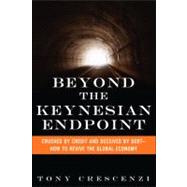
Tony Crescenzi is Executive Vice President, Market Strategist, and Portfolio Manager for PIMCO, a leading global investment management firm. He was previously Chief Bond Market Strategist at Miller Tabak, where he worked for 23 years.
Crescenzi appears regularly on CNBC and Bloomberg, has guest-hosted Squawk Box, and has taught at Baruch College’s executive MBA program for 10 years. He has 28 years of investment experience and holds an MBA from St. John’s University and an undergraduate degree from the City University of New York.
His books include Investing from the Top Down, the recent Fourth Edition of Marcia Stigum’s 1,200-page classic The Money Market, and The Strategic Bond Investor, Second Edition.
| Viral Fusion | |
| Structure and Working of Viral Fusion Machinery | |
| Overview | p. 49 |
| Introduction | p. 50 |
| Structures of Fusion Proteins | p. 51 |
| Regulation of the Conformational Change | p. 63 |
| Working of the Fusion Machinery | p. 65 |
| Concluding Remarks | p. 71 |
| References | p. 71 |
| Membrane Fusion Mediated by Human Immunodeficiency Virus Envelope Glycoprotein | |
| Overview | p. 81 |
| Introduction | p. 82 |
| HIV Assembly and Structure | p. 82 |
| Structural Changes in HIV Env Leading to Membrane Fusion | p. 86 |
| What Drives the Enlargement of Fusion Pores? | p. 92 |
| HIV Entry Pathways | p. 93 |
| Concluding Remarks | p. 97 |
| References | p. 98 |
| The Reovirus Fusion-Associated Small Transmembrane (FAST) Proteins: Virus-Encoded Cellular Fusogens | |
| Overview | p. 107 |
| Introduction | p. 108 |
| The Diversity of Fast Proteins | p. 112 |
| The Fast Proteins are Necessary and Sufficient to Induce Membrane Fusion | p. 115 |
| The Fast Proteins and Prefusion Events | p. 116 |
| The Fast Proteins and Membrane Merger | p. 121 |
| The Fast Proteins and Postfusion Events | p. 128 |
| Model of the Fast Protein-Mediated Cell-Cell Fusion Reaction | p. 130 |
| Summary and Future Directions | p. 132 |
| References | p. 134 |
| Intracellular Fusion | |
| C2 Domains and Membrane Fusion | |
| Overview | p. 141 |
| Membrane Fusion | p. 141 |
| The Molecular Machinery Mediating Calcium-Dependent Membrane Fusion | p. 146 |
| Conclusion | p. 154 |
| References | p. 155 |
| Chasing the Trails of SNAREs and Lipids Along the Membrane Fusion Pathway | |
| Overview | p. 161 |
| Introduction | p. 162 |
| SNARE-Dependent Membrane Fusion | p. 163 |
| Small Molecules as Interrogators for SNARE-Mediated Membrane Fusion | p. 170 |
| Single Molecule (or Particle) Fluorescence Techniques to Study SNARE-Mediated Membrane Fusion | p. 173 |
| References | p. 180 |
| Inferring Structures of Kinetic Intermediates in Ca2+-Triggered Exocytosis | |
| Overview | p. 185 |
| Introduction | p. 186 |
| Hypothetical Intermediates | p. 187 |
| Lipid Contact | p. 188 |
| Fluid Contact | p. 190 |
| Hydrocarbon-Water Contact | p. 191 |
| Membrane Bending | p. 192 |
| Role of Proteins | p. 196 |
| Conclusion | p. 202 |
| References | p. 203 |
| Developmental Cell Fusion | |
| Eukaryotic Cell-Cell Fusion Families | |
| Overview | p. 209 |
| Introduction | p. 210 |
| Choosing a Model System: C. elegans as an Organism to Study Cell-Cell Fusion | p. 211 |
| Syncytins: an Expanding Metazoan Fusion Family | p. 223 |
| Regulation of Cell-Cell Fusion in Nematodes and Mammals | p. 225 |
| Concluding Remarks | p. 226 |
| References | p. 227 |
| Invasive Podosomes and Myoblast Fusion | |
| Overview | p. 235 |
| Introduction | p. 235 |
| Myoblast Fusion in Vertebrates | p. 235 |
| Drosophila as A Model System to Study Myoblast Fusion | p. 237 |
| Myoblast Fusion in Drosophila | p. 238 |
| Relevance to Vertebrate Myoblast Fusion | p. 252 |
| Concluding Remarks | p. 253 |
| References | p. 254 |
| Theoretical Modeling | |
| Lipid Acrobatics in the Membrane Fusion Arena | |
| Overview | p. 259 |
| Introduction | p. 260 |
| Historical Background | p. 261 |
| Fusion Pathways at the Molecular Level | p. 263 |
| Energy Landscape Along the Fusion Pathway | p. 268 |
| Fission Pathways in Molecular Detail | p. 276 |
| Peptide Modulated Fusion | p. 281 |
| Outlook | p. 287 |
| References | p. 289 |
| An Alternate Path for Fusion and its Exploration by Field-Theoretic Means | |
| Overview | p. 295 |
| Introduction | p. 295 |
| A Different Pathway to Fusion | p. 298 |
| Results from A Field-Theoretic Description | p. 303 |
| Outlook | p. 314 |
| Conclusion | p. 318 |
| References | p. 319 |
| Index | p. 325 |
| Table of Contents provided by Ingram. All Rights Reserved. |
The New copy of this book will include any supplemental materials advertised. Please check the title of the book to determine if it should include any access cards, study guides, lab manuals, CDs, etc.
The Used, Rental and eBook copies of this book are not guaranteed to include any supplemental materials. Typically, only the book itself is included. This is true even if the title states it includes any access cards, study guides, lab manuals, CDs, etc.